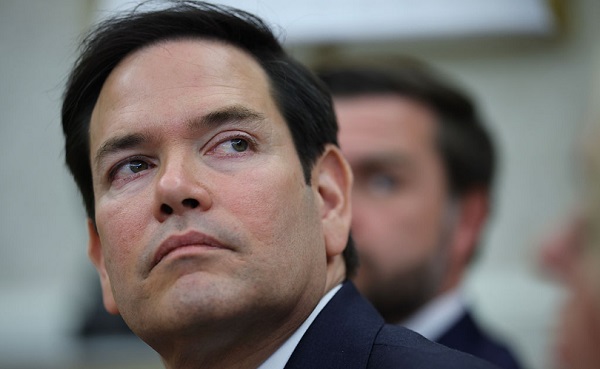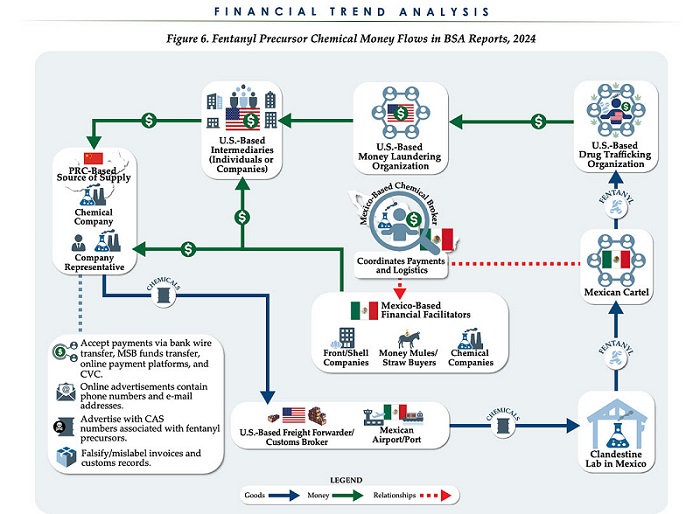Alberta
Alberta Infrastructure reviews 2024 progress

Hundreds of infrastructure projects completed or underway throughout 2024 helped build Alberta communities, boost the economy and support thousands of jobs.
Throughout the province, Infrastructure worked in collaboration with industry, school jurisdictions, Alberta Health and municipal and community partners to deliver the new, modernized and well-maintained public facilities that house the vital programs and services Alberta families and communities rely on.
“This past year, we completed hundreds of projects across Alberta, providing growing communities with new and modernized facilities. We also passed the Real Property Governance Act, a piece of legislation that helps the government better manage assets for Albertans and ultimately provides better value for our tax dollars. As we move into 2025, our team is committed to delivering the essential infrastructure needed to support the demands of our growing and robust economy.”
With a strong outlook for Alberta’s construction market, 2025 is shaping up to be another productive year. Alberta Infrastructure remains committed to completing work on schedule and on budget, while maximizing the value of taxpayer money.
This past year saw a focus on further developing relationships with industry partners across various trades, backgrounds, specialities and sectors. In 2025, this work will continue through Industry Liaison Committees, roundtables and other opportunities that will maximize collaboration and productivity. Alberta’s future is strong, competitive and full of opportunity.
2024 Infrastructure highlights
Schools
- In September, Alberta’s government announced a generational commitment of $8.6 billion to build schools now. This investment will award up to 90 new schools and up to 24 modernizations or replacements over the next three years.
- In addition, a new in-budget approval process has been introduced for school construction that will accelerate project progression through development stages, reducing project timelines by as much as six months.
- In 2024, 10 schools were built across the province, creating space for more than 9,600 students in nine communities, including:
- Blackfalds, Calgary, Coaldale, Edmonton, Fort Vermillion, Grande Prairie, Langdon, Leduc and Wabasca-Desmarais.
- Entering the new year, another 82 school projects are underway, progressing through various stages of planning, design and construction.
Health Facilities
- As announced in Budget 2024, a modern, standalone Stollery Children’s Hospital in Edmonton remains a key priority with $20 million budgeted over the next three years for early planning.
- Redevelopment of Calgary’s Rockyview General Hospital Intensive Care Unit, Coronary Care Unit and Gastrointestinal Clinic were completed in 2024.
- Renovations of operating rooms and support areas in Rocky Mountain House through the Alberta Surgical Initiative (ASI) wrapped up this past spring.
- Through the ASI, 31 projects are underway in planning, design or construction in Brooks, Calgary, Edmonton, Innisfail, Lethbridge and Olds.
- Another 53 health projects are underway going into 2025.
- This includes awarding the construction manager contract for the Red Deer Regional Hospital Centre (RDRHC) this past summer and making progress on the new patient tower and redevelopment.
- The procurement process for the RDRHC Ambulatory building is ongoing, with contractor selection expected in spring 2025 and groundbreaking in summer 2025.
- This includes awarding the construction manager contract for the Red Deer Regional Hospital Centre (RDRHC) this past summer and making progress on the new patient tower and redevelopment.
Government Facilities
- The Lakeview Recovery Community in Gunn completed construction and was handed over to Mental Health and Addiction for operations.
- Construction of the Calgary Recovery Community is anticipated to be complete in early 2025.
- The new $203-million Red Deer Justice Centre completed construction and will provide the community with 12 courtrooms when it officially opens in the first quarter of 2025.
- Another 20 new government facility projects are underway, such as recovery community facilities in Grande Prairie and Edmonton, and campus upgrades to the Yellowhead Youth Centre.
Capital Maintenance and Renewal
- Work done through Capital Maintenance and Renewal (CMR) helps upgrade existing government facilities and assets. In 2024, work finished on 85 CMR projects, including construction of the new reflecting pool and fountain at the Alberta legislature grounds in time for Canada Day celebrations.
- Another 212 CMR projects are underway at government facilities going into the new year, with an additional 516 specifically at health facilities.
Public-Private Partnership (P3) Awards
- In May, Alberta’s government completed construction of five high schools in Blackfalds, Langdon, Leduc and two in Edmonton. All finished on schedule, on budget and ready for the 2024-25 school year.
- This bundle received a Silver Award for Design & Construction at the 2024 National Awards for Innovation and Excellence in P3s.
- Procurement is underway to deliver another bundle of new Alberta schools in Airdrie, Blackfalds, Calgary, Chestermere, Edmonton and Okotoks.
- The Evan-Thomas Water and Wastewater Treatment Plant in Kananaskis won Best Operational Project at the P3 Partnerships Bulletin awards.
Legislation
- In May 2024, Infrastructure’s Real Property Governance Act received royal assent. The act helps increase transparency and reduce red tape by creating consistent rules across government for the disposal of property and creates a centralized inventory of public lands and buildings to help government better manage these assets for Albertans.
- In November 2024, Alberta’s government introduced amendments to the Public Works Act (PWA) that mandate payment timelines and invoicing provisions for public infrastructure work, helping ensure contractors and subcontractors are paid fairly and promptly.
Alberta
CPP another example of Albertans’ outsized contribution to Canada

From the Fraser Institute
By Tegan Hill
Amid the economic uncertainty fuelled by Trump’s trade war, its perhaps more important than ever to understand Alberta’s crucial role in the federation and its outsized contribution to programs such as the Canada Pension Plan (CPP).
From 1981 to 2022, Albertan’s net contribution to the CPP—meaning the amount Albertans paid into the program over and above what retirees in Alberta received in CPP payments—was $53.6 billion. In 2022 (the latest year of available data), Albertans’ net contribution to the CPP was $3.0 billion.
During that same period (1981 to 2022), British Columbia was the only other province where residents paid more into the CPP than retirees received in benefits—and Alberta’s contribution was six times greater than B.C.’s contribution. Put differently, residents in seven out of the nine provinces that participate in the CPP (Quebec has its own plan) receive more back in benefits than they contribute to the program.
Albertans pay an outsized contribution to federal and national programs, including the CPP because of the province’s relatively high rates of employment, higher average incomes and younger population (i.e. more workers pay into the CPP and less retirees take from it).
Put simply, Albertan workers have been helping fund the retirement of Canadians from coast to coast for decades, and without Alberta, the CPP would look much different.
How different?
If Alberta withdrew from the CPP and established its own standalone provincial pension plan, Alberta workers would receive the same retirement benefits but at a lower cost (i.e. lower CPP contribution rate deducted from our paycheques) than other Canadians, while the contribution rate—essentially the CPP tax rate—to fund the program would likely need to increase for the rest of the country to maintain the same benefits.
And given current demographic projections, immigration patterns and Alberta’s long history of leading the provinces in economic growth, Albertan workers will likely continue to pay more into the CPP than Albertan retirees get back from it.
Therefore, considering Alberta’s crucial role in national programs, the next federal government—whoever that may be—should undo and prevent policies that negatively impact the province and Albertans ability to contribute to Canada. Think of Bill C-69 (which imposes complex, uncertain and onerous review requirements on major energy projects), Bill C-48 (which bans large oil tankers off B.C.’s northern coast and limits access to Asian markets), an arbitrary cap on oil and gas emissions, numerous other “net-zero” targets, and so on.
Canada faces serious economic challenges, including a trade war with the United States. In times like this, it’s important to remember Alberta’s crucial role in the federation and the outsized contributions of Alberta workers to the wellbeing of Canadians across the country.
Alberta
Made in Alberta! Province makes it easier to support local products with Buy Local program

Show your Alberta side. Buy Local. |
When the going gets tough, Albertans stick together. That’s why Alberta’s government is launching a new campaign to benefit hard-working Albertans.
Global uncertainty is threatening the livelihoods of hard-working Alberta farmers, ranchers, processors and their families. The ‘Buy Local’ campaign, recently launched by Alberta’s government, encourages consumers to eat, drink and buy local to show our unified support for the province’s agriculture and food industry.
The government’s ‘Buy Local’ campaign encourages consumers to buy products from Alberta’s hard-working farmers, ranchers and food processors that produce safe, nutritious food for Albertans, Canadians and the world.
“It’s time to let these hard-working Albertans know we have their back. Now, more than ever, we need to shop local and buy made-in-Alberta products. The next time you are grocery shopping or go out for dinner or a drink with your friends or family, support local to demonstrate your Alberta pride. We are pleased tariffs don’t impact the ag industry right now and will keep advocating for our ag industry.”
Alberta’s government supports consumer choice. We are providing tools to help folks easily identify Alberta- and Canadian-made foods and products. Choosing local products keeps Albertans’ hard-earned dollars in our province. Whether it is farm-fresh vegetables, potatoes, honey, craft beer, frozen food or our world-renowned beef, Alberta has an abundance of fresh foods produced right on our doorstep.
Quick facts
- This summer, Albertans can support local at more than 150 farmers’ markets across the province and meet the folks who make, bake and grow our food.
- In March 2023, the Alberta government launched the ‘Made in Alberta’ voluntary food and beverage labelling program to support local agriculture and food sectors.
- Through direct connections with processors, the program has created the momentum to continue expanding consumer awareness about the ‘Made in Alberta’ label to help shoppers quickly identify foods and beverages produced in our province.
- Made in Alberta product catalogue website
Related information
-

 2025 Federal Election2 days ago
2025 Federal Election2 days agoBREAKING: THE FEDERAL BRIEF THAT SHOULD SINK CARNEY
-

 2025 Federal Election2 days ago
2025 Federal Election2 days agoCHINESE ELECTION THREAT WARNING: Conservative Candidate Joe Tay Paused Public Campaign
-

 International23 hours ago
International23 hours agoPope Francis’ body on display at the Vatican until Friday
-

 Media2 days ago
Media2 days agoCBC retracts false claims about residential schools after accusing Rebel News of ‘misinformation’
-

 International1 day ago
International1 day agoNew York Times publishes chilling new justification for assisted suicide
-

 conflict18 hours ago
conflict18 hours agoMarco Rubio says US could soon ‘move on’ from Ukraine conflict: ‘This is not our war’
-

 Business13 hours ago
Business13 hours agoChinese firm unveils palm-based biometric ID payments, sparking fresh privacy concerns
-

 2025 Federal Election1 day ago
2025 Federal Election1 day agoMark Carney Wants You to Forget He Clearly Opposes the Development and Export of Canada’s Natural Resources





